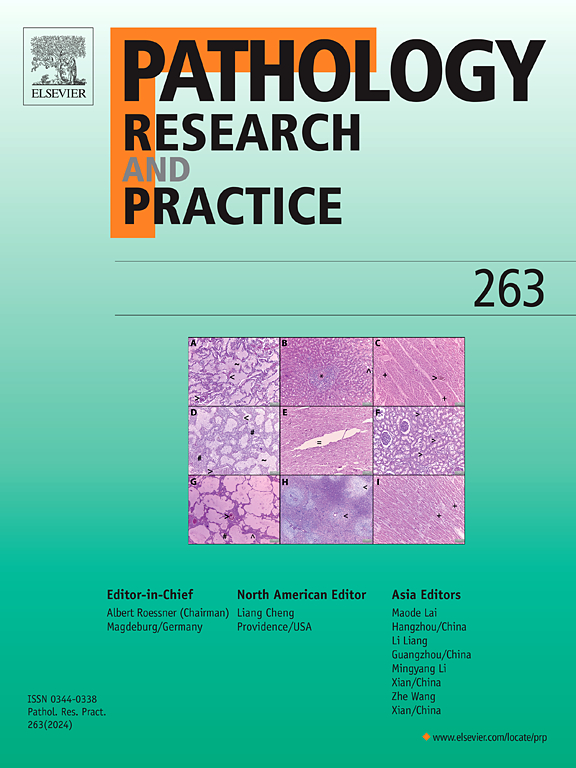Chemo-sensitive and chemo-resistant ovarian cancer cells show differences in cellular processes leading to pyroptotic cell death
IF 2.9
4区 医学
Q2 PATHOLOGY
引用次数: 0
Abstract
Tumor immunology in ovarian cancer is not completely understood. Chemoresistance limits the success of available treatment options for patients with ovarian cancer. Pyroptosis, pro-inflammatory programmed cell death characterized by membrane pore formation by gasdermin proteins, is important for both immunogenicity and drug resistance. Here, we showed that estrogen increases GSDMC and GSDMD mRNA levels in chemo-sensitive ovarian cancer cells; but, not in chemo-resistant ovarian cancer cells in vitro. GSDMC or GSDMD overexpression increases cell viability in chemo-sensitive ovarian cancer cells; but, not in chemo-resistant ovarian cancer cells. Silencing of GSDMD in chemo-sensitive ovarian cancer cells and silencing of GSDMC in chemo-resistant ovarian cancer cells limit the effect of nigericin, a pyroptosis inducer, on cell viability. Inhibition of caspase-1, −4, −6 or −8 blocks nigericin-induced cell death (pyroptosis) in chemo-sensitive ovarian cancer cells; however, only the inhibition of caspase-1 blocks nigericin-induced cell death in chemo-resistant ovarian cancer cells, showing that caspases participating in pyroptosis might differ between ovarian cancer cells based on their chemo-sensitivity profiles. Treatment with disulfiram, a GSDMD pore formation inhibitor, decreases cell viability in both cell lines. Lastly, we found that in chemo-resistant ovarian cancer cell line, disulfiram and nigericin combination treatment decreases cell viability even more compared to only disulfiram or only nigericin treatment. Combined, our study points that ovarian cancer cells with different chemosensitivity profiles might have certain differences in pyroptotic cell death.
对化疗敏感的卵巢癌细胞和对化疗耐受的卵巢癌细胞在导致细胞自燃死亡的细胞过程中表现出差异。
本文章由计算机程序翻译,如有差异,请以英文原文为准。
求助全文
约1分钟内获得全文
求助全文
来源期刊
CiteScore
5.00
自引率
3.60%
发文量
405
审稿时长
24 days
期刊介绍:
Pathology, Research and Practice provides accessible coverage of the most recent developments across the entire field of pathology: Reviews focus on recent progress in pathology, while Comments look at interesting current problems and at hypotheses for future developments in pathology. Original Papers present novel findings on all aspects of general, anatomic and molecular pathology. Rapid Communications inform readers on preliminary findings that may be relevant for further studies and need to be communicated quickly. Teaching Cases look at new aspects or special diagnostic problems of diseases and at case reports relevant for the pathologist''s practice.

 求助内容:
求助内容: 应助结果提醒方式:
应助结果提醒方式:


